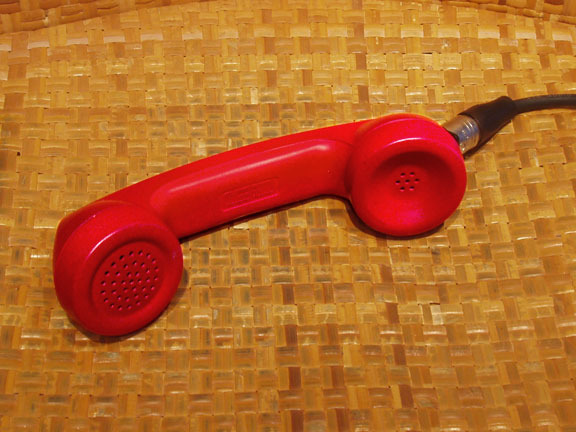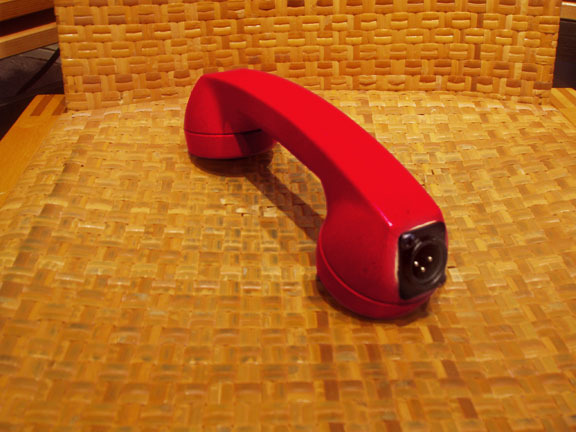joro
Active member
I would like to try connecting an old rotary telephone with a carbon button in the handset to a mic pre and powering it with phantom power. I've already configured just a handset with a 9v battery that works well. But, I thought it might be interesting to try building an interface box that I could plug any phone into and it would be powered by phantom power.
The phone company supplies 48v over the phone lines (actually, mine read 44.8v), so I guess phantom should be a good supply. The difference is the phone lines have 2 wires (basically + & - for the power) whereas mic lines have 3 wires, pin 2 hot, pin 3 cold, and pin 1 ground (+,+,- for the power). I figured I could use a few resistors and a couple capacitors to make the interface. I'm wondering what would be the best values to use and would like to understand how different values would effect the circuit.
Would someone please be able to explain how different values would effect the performance of the circuit?
I put resistors on pin 1, pin 2, and pin 3 and tied the pin 2 and pin 3 resistors together to combine the +48v and connected that and the pin 1 resistor to the phone. Then I put caps from the phone wires to pin 2 and pin 3 bypassing the resistors.
I know the value of the resistors will effect the amount of current for the carbon button, and the pin 2 and pin 3 resistors should be matched, right? But I'm wondering whether the pin 1 resistor should be less than, equal to, or greater than the pin 2 and 3 resistors and how each configuration will effect the circuit.
I tried the circuit with 1.5K ohms for each resistor (and 10uf caps) and it worked fine. It put the current at around 7mA (instead of the 23mA that I measured when connected to the phone company). By the way, the resistance of the phone measures about 330 ohms. I also tried the circuit with a 12K pot on pin 1 along with the 1.5K resistors on pins 2 and 3. It obviously effected the current and thus the volume, but I didn't really notice a change in the sound whether pin 1 resistance was less than or greater than pin 2 and 3. Does it not matter what values I pick, or are there ideal values that I should use? With no resistance on pin 1 then all the signal would go to ground, right? And with no resistance on pins 2 & 3 then the signal would cancel itself, right? Is there a minimum value that I would definitely want to be above for pin 2 and 3, and is there a minimum value that I want to be above for pin 1?
Thanks for any help understanding this,
Pete
The phone company supplies 48v over the phone lines (actually, mine read 44.8v), so I guess phantom should be a good supply. The difference is the phone lines have 2 wires (basically + & - for the power) whereas mic lines have 3 wires, pin 2 hot, pin 3 cold, and pin 1 ground (+,+,- for the power). I figured I could use a few resistors and a couple capacitors to make the interface. I'm wondering what would be the best values to use and would like to understand how different values would effect the circuit.
Would someone please be able to explain how different values would effect the performance of the circuit?
I put resistors on pin 1, pin 2, and pin 3 and tied the pin 2 and pin 3 resistors together to combine the +48v and connected that and the pin 1 resistor to the phone. Then I put caps from the phone wires to pin 2 and pin 3 bypassing the resistors.
I know the value of the resistors will effect the amount of current for the carbon button, and the pin 2 and pin 3 resistors should be matched, right? But I'm wondering whether the pin 1 resistor should be less than, equal to, or greater than the pin 2 and 3 resistors and how each configuration will effect the circuit.
I tried the circuit with 1.5K ohms for each resistor (and 10uf caps) and it worked fine. It put the current at around 7mA (instead of the 23mA that I measured when connected to the phone company). By the way, the resistance of the phone measures about 330 ohms. I also tried the circuit with a 12K pot on pin 1 along with the 1.5K resistors on pins 2 and 3. It obviously effected the current and thus the volume, but I didn't really notice a change in the sound whether pin 1 resistance was less than or greater than pin 2 and 3. Does it not matter what values I pick, or are there ideal values that I should use? With no resistance on pin 1 then all the signal would go to ground, right? And with no resistance on pins 2 & 3 then the signal would cancel itself, right? Is there a minimum value that I would definitely want to be above for pin 2 and 3, and is there a minimum value that I want to be above for pin 1?
Thanks for any help understanding this,
Pete







![Electronics Soldering Iron Kit, [Upgraded] Soldering Iron 110V 90W LCD Digital Portable Soldering Kit 180-480℃(356-896℉), Welding Tool with ON/OFF Switch, Auto-sleep, Thermostatic Design](https://m.media-amazon.com/images/I/41gRDnlyfJS._SL500_.jpg)





























